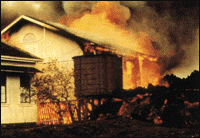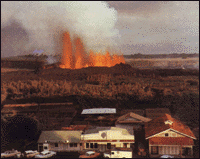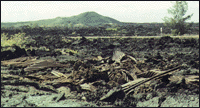Volcanic Hazards and Benefits

In the short term--on a human time scale--some Hawaiian eruptions can be extremely destructive, causing major disruptions in the daily lives of the people affected by them. On a geologic time scale (thousands to millions of years), however, the eruptions have been beneficial.
Volcanic hazards
More than 270,000 people have been killed directly or indirectly by volcanic activity worldwide during the past 500 years. Nearly all of the deaths have been caused by explosive eruptions of composite volcanoes along the boundaries of the Earth's tectonic plates. The worst recent volcanic disaster was in November 1985, when mudflows triggered by relatively small eruption of glacier-capped Nevado del Ruiz Volcano, Colombia, buried the town of Armero and killed more than 22,000 people. In contrast, fewer than a hundred people have been killed by eruptions in the recorded history of Hawaii and only one of them in this century.

